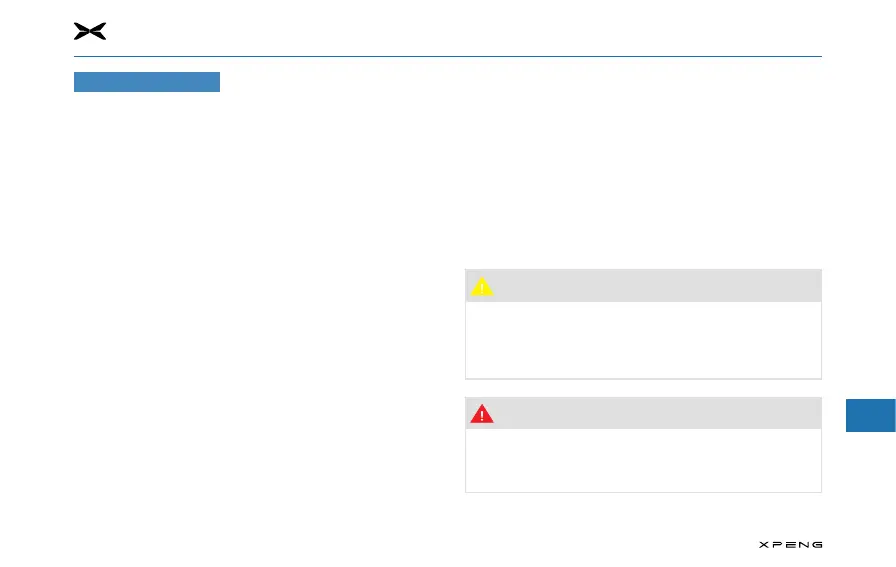1
2
3
4
5
6
7
8
9
10
11
197
Tire Maintenance
Inspection and Maintenance of TiresInspection and Maintenance of Tires
Check the tread and side walls regularly for any signs of
deformation (bulging), cuts, or wear.
Tire WearTire Wear
Sucient tread depth is critical to tire performance. Tires with
a tread depth of less than 3 mm are more likely to slip on wet
surfaces and should not be used. Tires with a tread depth of
less than 4 mm do not perform well on snowy and muddy
roads and should not be used during winter.
To reduce tire wear and extend the life of your tires, please
maintain the tires based on your driving habits and road
conditions:
─
Avoid accelerating violently.
─
Avoid turning sharply and braking hard.
─
Slow down when driving over potholes, curbs, or similar
sections of the road.
─
It is recommended to align the tires every 5,000-8,000 km.
Replacement of Tires and WheelsReplacement of Tires and Wheels
Tires will deteriorate over time due to UV rays, extreme
temperatures, high loads, and environmental conditions.
They may also have normal wear during normal acceleration,
braking, and turning. It is recommended that tires be replaced
every three years or 40,000 km (whichever comes first), or
earlier if necessary (e.g. if the tire tread wears down to the
wear mark, if a foreign object scratches or punctures the
surface of the tire).
Caution
●
For your safety, only use tires and hubs that match
the original specifications. If the tires do not match
the original specifications, the operation of the Tire
Pressure Monitoring System (TPMS) may be aected.
Warning
●
Do not modify the wheel and tire pressure monitoring
device, which may reduce the safety of the vehicle's
operation.

